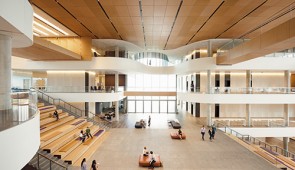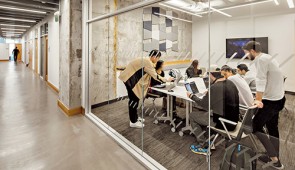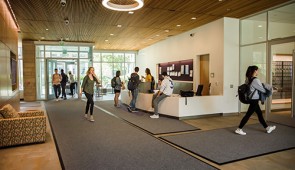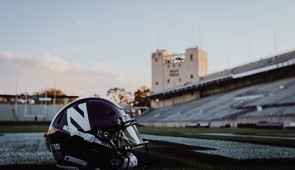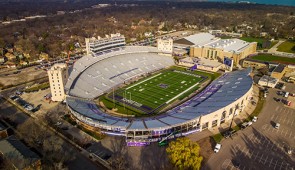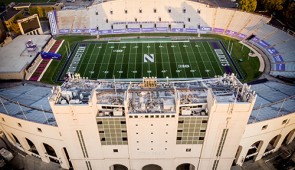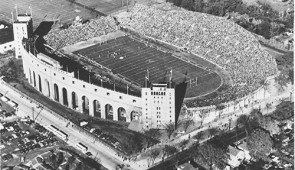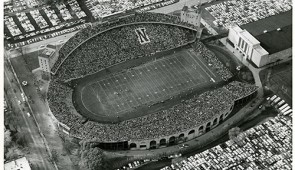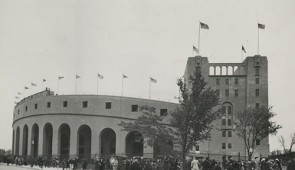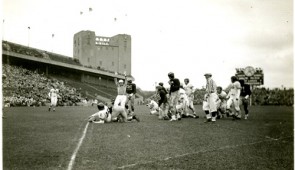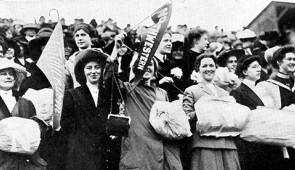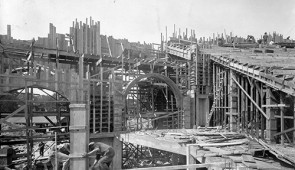‘We Will’ Campaign tops $6 billion from more than 174,000 supporters
University-wide fundraising initiative capped off with $480 million gift from the Patrick and Shirley Ryan Family
- Link to: Northwestern Now Story
- Generous support from alumni and friends made “We Will” Campaign among the most successful fundraising campaigns in the history of higher education
- Largest gift in Northwestern’s history will benefit medical research, microeconomics, business, and athletics and recreation
- Campaign funds are advancing strategic University priorities including financial aid, student experience, research and discovery, and diversity initiatives
Northwestern University announced today that its ambitious fundraising campaign, We Will. The Campaign for Northwestern, raised over $6 billion from more than 174,000 members of the Northwestern community.
“This is an extraordinary moment for Northwestern,” President Morton Schapiro said. “We said ‘We Will,’ and we did. Thousands of our alumni, parents, faculty, staff, students and friends came together to support the astonishing trajectory of Northwestern and increase our impact on the world, and I am truly humbled by their generosity.”
Northwestern publicly launched the “We Will” Campaign in March 2014 in support of the University’s “Northwestern Will” strategic plan, with the goals of raising $3.75 billion from at least 141,000 donors. After achieving the goals two years ahead of schedule, the University raised the goals to $5 billion and 170,000 donors in September 2018. The University-wide fundraising initiative concluded June 30, 2021, with a total of $6.1 billion raised from 174,380 donors.
The donor participation goal was a distinguishing factor for the “We Will” Campaign, designed to expand the University’s base of support. Alumni, parents and friends from around the world made 626,796 gifts during the Campaign, supporting areas across Northwestern. Of these gifts, 526,179 (83.9%) were contributions of $1,000 or less; 361,343 (57.6%) were contributions of $100 or less.
“We are extremely grateful to our community of generous and dedicated supporters who invested in Northwestern through the Campaign and helped the University achieve new heights,” said University Trustee Paula B. Pretlow ’77, ’78 MBA, “We Will” Campaign co-chair. “Our collective support will continue to propel our students, faculty and staff forward and shape the Northwestern University of tomorrow.”
The Campaign also was highlighted by a series of transformative gifts. In 2015, the University raised its first “We Will” Campaign gift of over $100 million, from Roberta Buffett Elliott ’54 — followed by landmark commitments from Louis A. Simpson ’58 (’96 P) and Kimberly K. Querrey (’22, ’23 P), the Patrick G. Ryan ’59, ’09 H and Shirley W. Ryan ’61, ’19 H (’97, ’00 P) Family, and the Pritzker Family Foundation.
Today, the University announced a $480 million gift from the Patrick G. and Shirley W. Ryan Family, the largest in Northwestern’s history. The gift will benefit several areas within Northwestern University Feinberg School of Medicine, including digital medicine, neuroscience, global health and translational research; microeconomics in the Weinberg College of Arts and Sciences; and the Kellogg School of Management. In addition, a portion of the funds will provide the lead gift to redevelop Ryan Field into a best-in-class stadium that will be dramatically more accessible and provide an enhanced gameday experience for students, alumni, fans and the surrounding community. The stadium redevelopment project also will help further Northwestern’s role as an economic engine for the City of Evanston.
Learn more about the record-breaking gift.
“The tremendous success of the ‘We Will’ Campaign is a testament to the visionary leadership of President Morton Schapiro,” said Lanny Martin ’68, ’73 JD (’02, ’08 P), chair of the University’s Board of Trustees, which was a driving force behind the Campaign, with $1.81 billion or 29.7% of funds raised from trustees. “I extend my gratitude to the Board of Trustees and to my fellow Campaign co-chairs — Neil Bluhm, Chris Combe, Bon French, Chris Galvin, Adam Karr, Paula Pretlow and Pat and Shirley Ryan — for their inspiring generosity and for guiding the Campaign to its momentous conclusion.”
Led by the Campaign Steering Committee, the “We Will” Campaign was supported by the efforts of 925 volunteers, including members of regional, international, gift planning and school and program committees. Volunteers helped the University raise funds and hold 62 Campaign events in 30 cities — 14 cities within the United States and 16 abroad — engaging 4,943 unique attendees.
Among the most successful fundraising campaigns in the history of higher education, the “We Will” Campaign raised nearly four times the amount of Northwestern’s previous campaign, “Campaign Northwestern,” which brought in $1.55 billion between fiscal years 1997 and 2003.
“The ‘We Will’ Campaign has, without a doubt, elevated Northwestern’s standing among the world’s preeminent research universities,” said University Trustee T. Bondurant (Bon) French ’75, ’76 MBA (’07, ’21 P), co-chair of the “We Will” Campaign. “Now is the time to continue our remarkable progress toward excellence, which we will do by leading the charge toward a more equitable and just society, expanding opportunities for our students to learn and thrive in a rapidly changing world and accelerating breakthrough research and innovations that serve society.”
Broad Support from the Northwestern Community
Donors from 116 countries made gifts of all sizes during the Campaign. Each year, more than 10,000 alumni, parents and friends participated in the Campaign as members of the Northwestern University Leadership Circle (NULC), which recognizes donors who make cumulative annual gifts of $1,000 or more.
In 2013, Northwestern launched NU Loyal, a giving society recognizing donors who support the University year after year. Over the course of the Campaign, 76,092 donors were NU Loyal members, supporting the University for three or more consecutive years. Dorothy Ruby Saxe ’46 (’00 GP) has given to Northwestern in each of the last 76 years, the most of any donor on record.
“As an immature, 16-year-old freshman, I learned about and grew to appreciate art, music and literature at Northwestern. It’s where I made lifelong friends and grew up,” Saxe said. “It never occurred to me that one did not support one’s alma mater, so I started and never stopped. I’m proud to see what a world-class university NU has become.”
The Campaign also engaged new donors, with 97,421 making their first gift to the University during the Campaign. And 922 included Northwestern in their estate plans, joining the Henry and Emma Rogers Society.
In total, undergraduate alumni gave $2.20 billion, or 36.2% of the Campaign’s total funds raised, with graduate and professional school alumni giving $817.7 million (13.4%), and others giving $3.07 billion (50.4%).
Significant impact across Northwestern
Gifts raised in the “We Will” Campaign are providing vast opportunities for Northwestern students and advancing programs across the University. Here are a few examples of the Campaign’s far-reaching impact:
- A total of 37,825 donors gave $436.3 million to financial aid, including $235.3 million for undergraduate scholarships, and created 534 endowed scholarships and fellowships that will support generations of students. Northwestern has significantly increased financial aid for its undergraduate students — from $106 million in the 2010–11 academic year to $209 million in 2020–21 — and eliminated loans for undergraduate students. Graduate student stipends also were increased to enhance the quality of life for graduate students. The University Fellowship rate rose from $20,928 in 2010–11 to $33,504 in 2020–21, and the Graduate Assistantship rate rose from $21,576 in 2010–11 to $33,504 in 2020–21.
- Northwestern has made significant progress in bringing more cultural, geographic and economic diversity to its student body and is recognized as a national leader among selective universities in enrolling and retaining first-generation and low-income students, including those who quality for the Federal Pell Grant. The percent of Pell Grant–eligible students in the entering class has increased from 14% (Class of 2015) to 20% (Class of 2024). Since fall 2018, at least 20 percent of the University’s incoming classes have been Pell Grant–eligible. In addition, the number of Chicago Public Schools alumni enrolled at Northwestern increased 152% from 210 students in the 2011–12 academic year to 529 students in 2019–20.
- International student scholarships expanded during the Campaign. Nineteen new endowed scholarships for international undergraduate students were created as part of the Buffett Matching Challenge for International Student Scholarships, a matching gift challenge supported by Roberta Buffett Elliott ’54.
- Campaign gifts also supported student research grants and student experience funds. Since summer 2012, 2,045 students have been awarded Summer Undergraduate Research Grants, and 2,807 students have received grants from the Summer Internship Grant Program, which makes it possible for undergraduate students to pursue unpaid internships.
- Throughout the Campaign, donors supported initiatives that advanced and expanded Northwestern’s research enterprise. Seventeen University research institutes and centers — and many additional programs and centers throughout Northwestern’s schools and units — were established in the “We Will” Campaign, including the Kimberly K. Querrey and Louis A. Simpson Institute for Bioelectronics and the Ronald and JoAnne Willens Center for Nano Oncology. Funding for research has escalated since the Campaign began. Awards from federal agencies, foundations and corporations totaled $893.4 million in fiscal year 2021 — an increase of more than 74% since fiscal year 2011 — continuing a decade-long trend that has positioned Northwestern among the United States’ most prestigious research institutions.
- Nearly half of the funds raised in the Campaign, more than $2.8 billion, have been designated to Northwestern Medicine and have helped drive high-impact clinical innovation, accelerate cutting-edge scientific discovery and educate the next generation of medical leaders. Ten biomedical centers and institutes were endowed at Northwestern Medicine in the Campaign. The Louis A. Simpson and Kimberly K. Querrey Biomedical Research Center, which officially opened in June 2019 as the largest new building solely dedicated to biomedical research at an American medical school, is facilitating scientific discoveries that will translate to better care for patients in Chicago and worldwide.
- A total of 90 endowed professorships were created during the Campaign to attract and retain top faculty. Of these, 25 were supported in part by Pat and Shirley Ryan through the Ryan Family Chair Challenge, which matched gifts made by other Northwestern supporters to establish new endowed professorships, or chairs, across a wide range of disciplines.
- The Campaign raised more than $96.5 million in support for 184 diversity, equity and inclusion–focused initiatives across the University, including the Black House renovations, social justice education and programs at the Center for Native American and Indigenous Research, the Institute for Sexual and Gender Minority Health and Wellbeing and the Center for the Study of Diversity and Democracy.
- Campaign funds also supported the construction of 25 new facilities on the Evanston and Chicago campuses — 22 in Evanston and three in Chicago — along with 32 major renovations — 27 in Evanston and five in Chicago. New, state-of-the-art facilities include the Global Hub, Simpson Querrey Biomedical Research Center, Segal Visitors Center, Patrick G. and Shirley W. Ryan Center for the Musical Arts, Welsh-Ryan Arena, Ryan Fieldhouse and the Walter Athletics Center. Major renovations have included the Seeley G. Mudd Building, Kresge Centennial Hall and a number of residence halls.
- And, since the start of the COVID-19 pandemic, the University raised more than $7.1 million in gifts supporting COVID-19-related initiatives, including emergency student assistance, community initiatives and research.
Multimedia Downloads
Campaign highlights
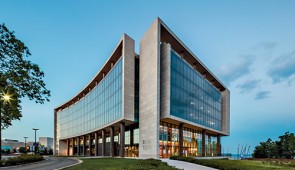
Photo credit: Pabst Photo
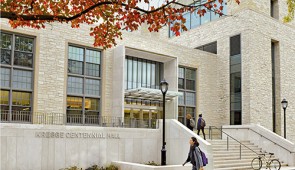
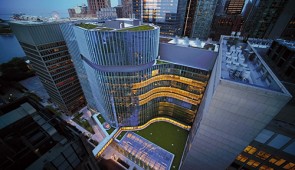
Photo credit: Soaring Badger Productions
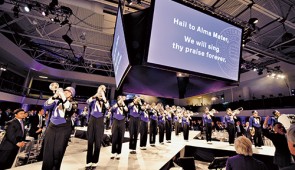
Photo credit: Bruce Powell
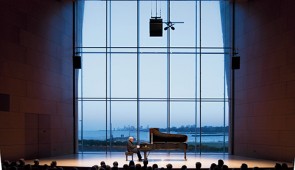
Photo credit: Todd Rosenberg Photography
